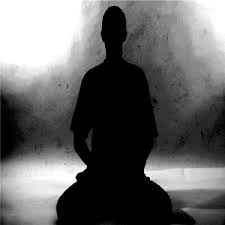Being Too Buddhist: A Teacher-Student Dialogue
Student: Are you busy?
Teacher: Why?
S: May I talk with you for a short while?
T: Yes.
S: I’ve been practising meditation for over ten years. I’ve studied the scriptures and received teachings from great meditation masters. I’ve written a book on meditation and I’ve even been awarded a PhD in Buddhist Studies. I’ve completed a three-year long retreat and practised advanced Mahāmudrā techniques. This was all before I came to practice with you, and I’ve followed your teachings for over 18 months now.
T: (remains silent)
S: It’s just that I feel ready to become a teacher myself. I feel I’m ready to leave and start teaching others.
T: (remains silent)
S: I want to know if I have your blessing to leave and teach?
T: You can leave whenever you want.
S: But do I have your blessing?
T: Why do you want to teach?
S: I want to help others. I want to tell them what I know and ease their suffering.
T: So, you came to me only to seek my approval for you to teach?
S: No, of course not. I came to follow your teachings. I came to learn from you.
T: But you haven’t followed my teachings. You haven’t learned a thing.
S: What do you mean?
T: You’ve wasted your time here.
S: But I’ve been so focussed on learning all there is to know.
T: That’s why you haven’t learned anything. Your head is full of useless information. You wish to learn only so you can impress yourself and others with how much you know. However, although you might be able to recite entire scriptures, you haven’t grasped their inner meaning.
S: What’s your point.
T: My point is that you’ve missed the point.
S: Your talking in riddles.
T: It’s not only during the last 18 months that you’ve wasted your time. You say that you’ve been practising meditation for ten years, but you don’t have ten years’ meditation experience. You have one years’ experience ten times. You haven’t continued to grow and to learn. This isn’t the same as having ten years’ experience.
S: Well, you’re not holding back with your words. In fact, I’m offended by what you’ve said.
T: You need to start from the beginning. You need to let go of what you think you know and relearn the foundation practices.
S: And how long will that take? When, in your so-called wise opinion, will I be ready to become a teacher in my own right?
T: When you no longer have the desire to become a teacher?
S: That doesn’t make sense. Why do you always talk in riddles?
T: It’s not a riddle.
S: You’re saying that I should abandon my wish to help others by teaching them the path. Isn’t this what you have been teaching us to do all along?
T: I am saying that you should abandon your ego.
S: But wanting to help others is an act of selflessness. How can there be ego involved?
T: You’re full of ego. You’re full of shit. Your words carry no weight because you don’t have the experience to back them up. When I talk about people corrupting the teachings, I’m talking about people like you. Your entire approach to Buddhist practice is governed by your ego. You’re a selfish egoistic pig, and in terms of spiritual progress, you’re worse off than somebody that hasn’t encountered the teachings. Your problem is that you’re ‘too Buddhist’.
S: How rude of you to say these things. I completely disagree with everything you have said.
T: To become a teacher, you must let go of the idea of being a teacher. A teacher simply teaches. They teach with each breath they take. They teach by the way they walk and by the way the sit down. They teach through their being, not through their words. A true Spiritual teacher has no interest in gathering followers. They are just as happy teaching a butterfly or a dog, as they are a gathering of 10,000 people. In fact, they humbly accept the butterfly or dog as their teacher. A true teacher doesn’t label themselves as a ‘teacher’.
S: In my opinion, a ‘true teacher’ doesn’t speak to people in the manner that you have just done. You tell us to show kindness to one another, yet you’re not following your own advice. Perhaps it’s you who hasn’t grasped the inner meaning of the teachings.
T: (remains silent)
S: You think you’re some kind of enlightened Zen master that can go around talking in riddles and being rude to people. People have feelings you know. In fact, you’re right, I did come here to seek your approval. If I want to teach, I require the approval of an established teacher. However, I don’t want your approval anymore. I no longer wish to be affiliated with you. I’ll find a teacher who can see my true qualities.
T: Do you see my point now?
S: What do you mean?
T: Look at how easily your ego flares up. Look at how red and tense your face is. You’re offended. You’re angry. Your ego is raging. In your book, you stated that “a person who has transcended their ego can’t be offended”. Are these not your words?
S: It’s true that I said that.
T: You also said that “people should see themselves as if looking in a mirror”. Can you see yourself now?
S: (puts head down and remains silent)
T: I’m asking you a question. Can you see yourself now?
S: (starts to cry)
T: I keep telling people that they need to make a choice. A choice between walking an authentic spiritual path or remaining in ignorance. These aren’t just words. This isn’t a game. I’m not talking about working towards a professional or academic qualification. You can’t pay lip service to spiritual practice. You must live it and breathe it. You must completely abandon yourself to the path. You can’t practice meditation to make a career out of it. You can’t have your cake and eat it.
S: I think you might be right. I’ve been wasting my time.
T: At least you see it now. This makes you more fortunate than most people in your position.
S: Having a partial knowledge of the teachings has done me more harm than good. I wish I had met you sooner.
T: You weren’t ready to meet me before now. You met me when you were supposed to.
S: How do I turn the situation around?
T: Take a step back and breathe. Breathe and know that you are breathing. Be and know that you are being. Let go of wanting to be a teacher. Let go of being a Buddhist. Sit at the centre of the universe and observe your mind as it engages with the world.
S: (laughs)
T: Why did you laugh?
S: It’s just that in my book, I wrote that “people caught up in being a Buddhist have missed the point of Buddhism”. Its only now that I truly understand the meaning of my own words.
T: It seems that you have taught yourself something. Perhaps you’re already a teacher without knowing it.
Ven Dr Edo Shonin and Ven William Van Gordon



























